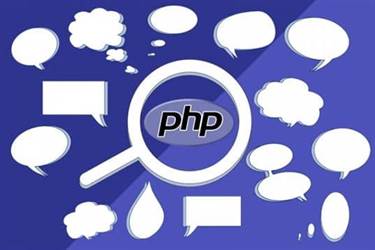This type of information is critical in developing your own incident response plan for a breach due to a third-party. OneTrust is a market leading provider of governance, risk management, and compliance solution, used by more than 12,000 global customers. Their risk management solution enables teams to streamline and automate the third-party management lifecycle, with clear workflows for onboarding, vendor assessment, risk identification, https://globalcloudteam.com/ reporting, and offboarding. Vendor risk management comprises activities involved in identifying, assessing, controlling, and mitigating the risks of third-party vendor and supplier relationships. It also involves applying due diligence to select and onboard new suppliers, vendors, and service providers. Many businesses avoid expanding their supplier ecosystem for fear of the increased risks that can come along.

Conducting robust geopolitical risk monitoring can provide early warning of potential trade actions, tariffs, legal actions, and other geopolitically driven risks. This type of TPM approach focuses on vendor risk questionnaires, due diligence, and documentation that the vendor provides. Taking a close look at the vendor’s security documentation and approach can prove to be invaluable for TPM programs. Look to ensure that the vendor’s security policies lineup with their answers on the assessment questionnaire and compliance requirements. In addition, you want to vet not only the third-party organization, but also the 4th and Nth parties that they work with. Watch this overview to learn how to gain continuous visibility into cyber, business, financial and ESG threats traced to vendors and suppliers.
See how customers are succeeding with SAP
Enable ad-hoc assessments by leveraging risk intelligence from external sources, incidents, performance failures, or business insights. Based on the responses, automatically calculate and aggregate risk scores to determine the overall risk posture of IT vendors. This team should own the setup of the vendor selection process, including creating documentation for choosing future vendors, collecting vendor details, and establishing ongoing reporting processes. A reporting process with vendors could include identifying any vulnerabilities and quickly resolving them. Once a vendor has been selected, a contract should be drafted that outlines the expectations and responsibilities of each party.

You can also easily scale your program with smart tiering recommendations. Bitsight analytics address peer comparison, digital risk exposure, predicting future performance, and other important cyber risk challenges. Get an immediate cybersecurity report when dangerous activity occurs, allowing you to act proactively before being contacted by the vendor.
Download this report to explore why cyber risk is rising in significance as a business risk.
These are in contrast to the previous generation of ESG laws, which simply required organizations to report on ESG actions taken. When monitoring for ESG risks, it is essential to go beyond third parties and monitor the entire extended supply chain. Many organizations have suffered enormous reputational damage in recent years as a result of their failure to effectively identify significant ESG harms from downstream fourth- and Nth-party suppliers. Most third-party risk assessment products, on the other hand, are primarily focused on cybersecurity threats, ignoring diversity and inclusion problems, which can result in negative press and reputational harm.
Make sure to identify the kind of risk each vendor poses for a better understanding of the foreseeable consequences that getting into a contract with a new vendor may have for your business. Proper vendor selections can significantly reduce the likelihood of risk emergence in later stages. In effect, these documents serve as guidelines detailing the proper steps, measures, and strategies that a firm should take to contain vendor risks to acceptable levels. Third-party vendors are an indispensable part of most businesses as they provide them with a competitive edge by spurring growth, boosting productivity, and cutting costs.
Vendor Risk Management (VRM): How to Implement a VRM Program that Prevents Third-Party Breaches
Simplify remediation by normalizing monitoring data into tangible risks, and link real-time cyber, business and financial events to assessment findings. Here are 7 ways to leverage machine learning analytics and reporting in your third-party risk management program. Relations between the U.S. and China continue to deteriorate, while tensions with countries including Russia, Iran and North Korea are increasing. As tensions grow, so does the risk of sudden business disruption stemming from trade actions, APTs and other events. The trade actions taken against China in the fall of 2022 showcases the sudden supply disruptions that can occur due to nation state activities.
Enrich the internal scores with relevant data from various internal systems and databases, results of audits, assessments and inspections, and content providers. Use scorecards to monitor the performance of IT vendors and identify potential points of failure in a proactive manner. Conduct structured risk and compliance assessments of IT vendors with pre-defined questionnaires.
What are the 3 Phases of Vendor Risk Management Lifecycle?
Instead of conducting periodic third party risk assessments, we recommend that you conduct continuous risk assessments. Of course, a monthly or quarterly evaluation is necessary to comprehend the vendor’s adherence to your requirements. Once you have the necessary data about third-party vendors, your job is to monitor and analyze vendor compliance and performance. This process also entails reviewing third-party policies and procedures, on-site reviews, and key risk and performance indicators. Launch vendor reassessments and continuously monitor and track vendor risk over time.
Exiger Acquires Industry-Leading Software Supply Chain and SBOM … – CSCMP’s Supply Chain Quarterly
Exiger Acquires Industry-Leading Software Supply Chain and SBOM ….
Posted: Tue, 16 May 2023 20:27:10 GMT [source]
See why Venminder is uniquely positioned to help you manage vendors and risk. With risk due diligence in your source-to-pay process, you can mitigate disruption while protecting revenue and reputation. For example, if your data is extremely sensitive, but the vendor’s database or server lacks the necessary security, the same information is communicated to the vendor, and the issue is resolved. Personalized customer service, and financially harm the organization, among other things.
Take contingency measures for business continuity
Archer is a leading provider of enterprise integrated vendor risk management solutions. Their integrated risk management solution offers a broad range of vendor risk management solutions, including third-party governance, business resiliency, and corporate compliance. Vendor risks are the threats posed to your organization from entities within the supply chain. For example, risks posed by external entities that provide your business with software, IT solutions, and goods and services are vendor risks. These could include your database developer, cloud service provider, website hosting service, payment processing company, and raw material supplier. In third party risk management, continuous monitoring involves constantly evaluating vendors’ security posture and the risk that each vendor poses to the organization.
- This data is leveraged for third-party risk management, reporting, and cyber insurance reporting.
- Increasingly, supplier risk management relies on software solutions that can help businesses perform these tasks faster and more accurately.
- Example questions include what type of training they do internally to mitigate risk and how often they perform internal risk assessments.
- And based on the significance of the association, define the roles and responsibilities of the vendor if any risk threatens your business.
- Notify your vendors so they can quickly remediate the issue before a threat actor exploits the flaw.
And because 60% of organizations are now working with more than 1,000 third parties, reducing the risk of human error is also an attractive benefit of vendor risk management automation. Continuous monitoring also helps your cybersecurity program run more efficiently, accelerating the number of vendors you can onboard without exceeding a manageable risk threshold. Certa’s third-party lifecycle management software can automate your key vendor management processes, saving you time, money, https://globalcloudteam.com/how-continuous-monitoring-helps-enterprises/ and effort. Our customizable toolkit allows you to monitor your third parties in a secure, centralized location, ensuring that things run smoothly while your risk and compliance teams provide the highest level of customer satisfaction. Continuous monitoring uses automation to help provide up-to-date security monitoring and support your supply chain risk management. This helps your team get the right data to identify potential threats as they happen and start remediation right away.
What Is Third-Party Monitoring (TPM) and How Does It Work?
During this phase, your organization should gather as much information about the vendor as possible. The onboarding stage is also the time to set up the vendor within your organization’s workflows, introducing the vendor to the tools and software they will be using, and sharing necessary access. Cybersecurity risks include ransomware attacks, malware, phishing, denial-of-service attacks, and even insider threats, to name a few. A recent example is the March 2021 ransomware attack on CNA Financial Corp. Get a personalized demo to find out how Bitsight can help you solve your most pressing security and risk challenges, including continuous monitoring.
